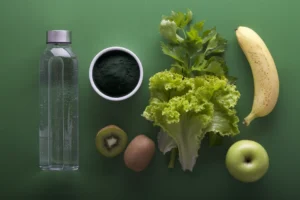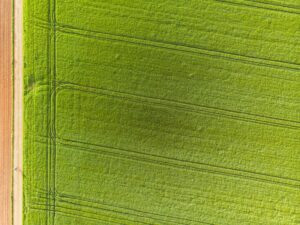Table of Contents
Honey is a simple pleasure. It’s easy to forget, while enjoying its luxurious fragrant sweetness on a slice of buttered toast, that honey is made by bees and is the end-product of a sophisticated production line and thousands of skilled workers.
The Process of Honey Production
Step 1: Gathering Nectar
Honey starts out as nectar, a rather dilute solution of various sugars that flowering plants produce to attract pollinating insects. Bees play a crucial role in this process as they collect nectar from flowers. When a bee finds a flower with nectar, it uses its straw-like proboscis to suck the nectar out.
Step 2: Storing Nectar
Instead of consuming the nectar immediately, a foraging worker bee stores it in its proventriculus or honey stomach. This specialized stomach can hold a significant amount of nectar, up to almost half the bee’s unloaded body mass. To fill it completely, the bee may need to visit thousands of flowers. While in the honey stomach, enzymes are already at work, breaking down the larger sugar molecules into smaller ones.
Step 3: Returning to the Hive
Once the bee has gathered enough nectar, it returns to the hive. On arrival, the forager unloads its cargo by regurgitating the sugary solution to other workers. These workers pass the nectar back and forth between each other, adding more enzymes each time. They also froth it up with their mouthparts to encourage the evaporation of water.
Step 4: Transforming Nectar into Honey
The next step in the honey-making process takes place in the honeycomb. Once the nectar has reached a sufficient sticky and viscous consistency, the workers deposit it into the beeswax cells of the honeycomb. The drying process continues as the workers fan the honey with their wings. As the water content reduces to about 18 percent (from the original 75 percent in the nectar), the workers seal the cells with beeswax lids, indicating that the nectar has become honey.
Step 5: Storage and Winter Survival
Honey serves as the primary source of sugar for the bee colony. While pollen provides protein and nutrients, honey is essential for energy. The stored honey acts as a stockpile to sustain the colony during the unproductive winter months. Unlike wasp and bumblebee colonies, which die off at the end of summer, honeybees hibernate within the hive and rely on the stored honey for survival.
Step 6: Shelf-Life and Preservation
Honey has an exceptionally long shelf-life, making it an ideal long-term store of energy. Archaeological discoveries have revealed pots of honey in ancient Egyptian tombs that are still supposedly perfectly edible. The high concentration of sugar in honey creates a hostile environment for yeasts and bacteria, preventing spoilage. Additionally, one of the enzymes produced by the honeybee’s proventriculus generates hydrogen peroxide and gluconic acid, both of which are toxic to microbes, further extending the honey’s lifespan.
The Effort Behind Honey Production
Producing honey requires immense effort from the bees. An average hive produces about 11kg of honey in a season, which necessitates the foragers to collectively fly over 1.5 million kilometers. To put it into perspective, a standard jar of honey requires about 80,000 kilometers of flying by the bees. The dedication and hard work put into making honey are truly remarkable and should be appreciated when savoring its taste on a slice of toast.
In conclusion, bees have perfected the art of honey production through a fascinating step-by-step process. From gathering nectar to transforming it into honey and storing it for survival, bees exemplify the remarkable efficiency and teamwork found in nature. So, the next time you enjoy a spoonful of honey, remember the incredible journey it took to reach your table.



